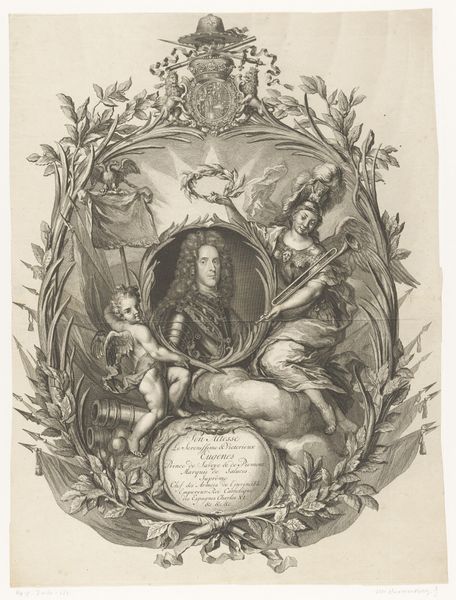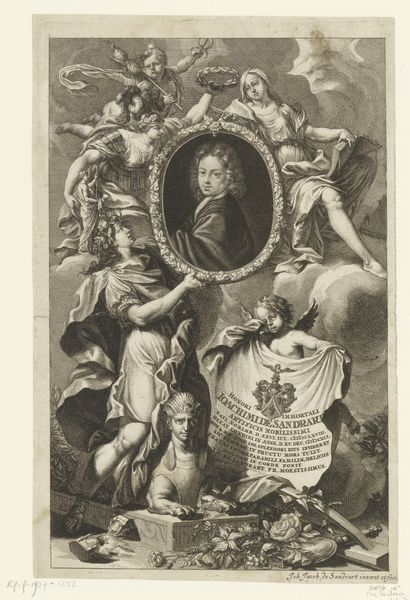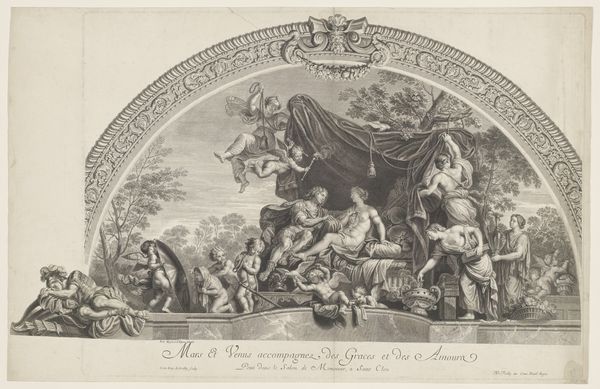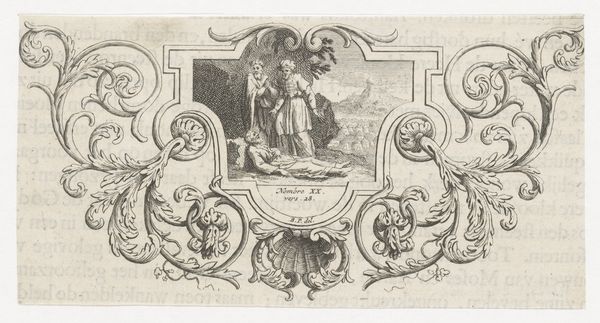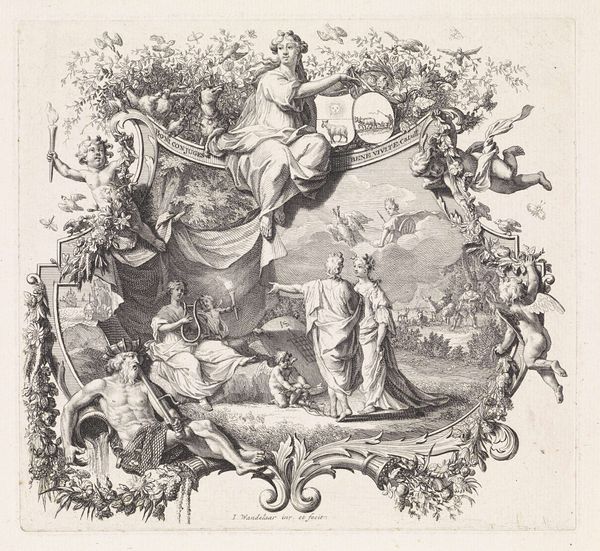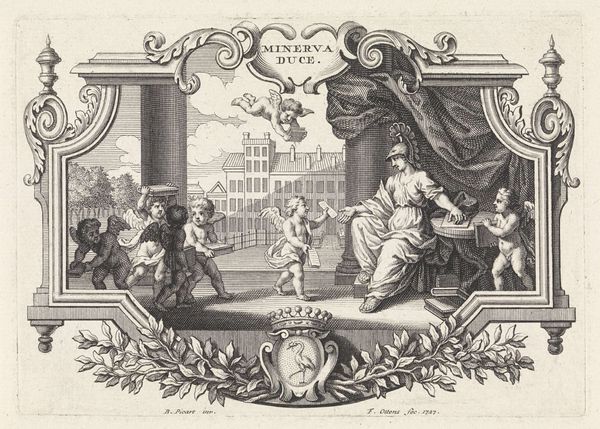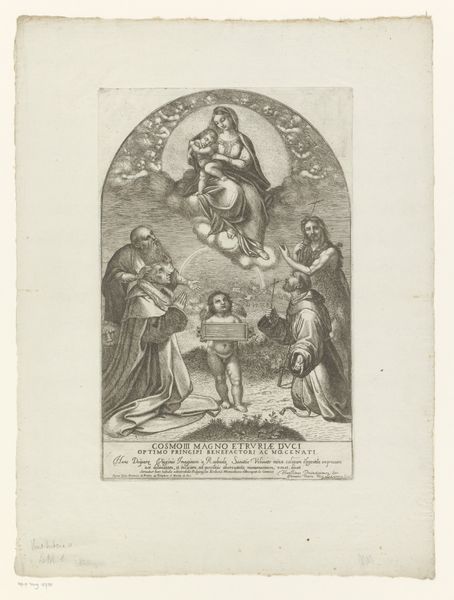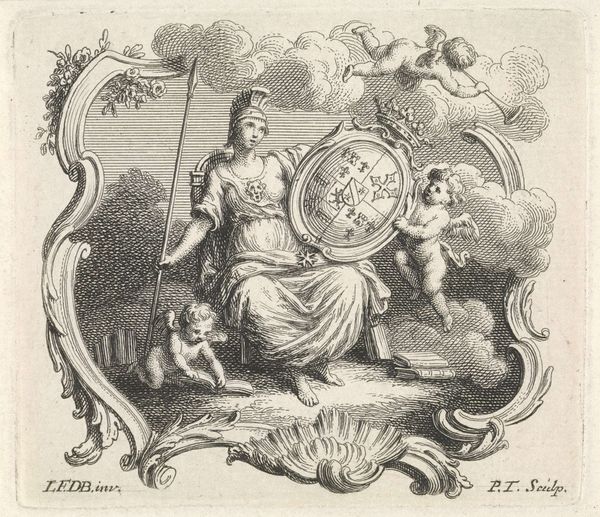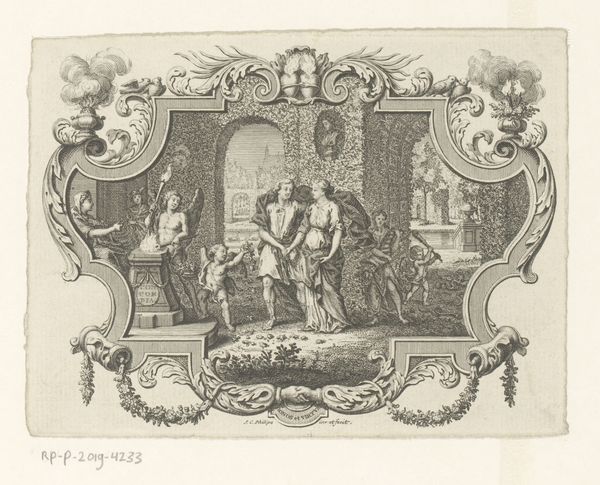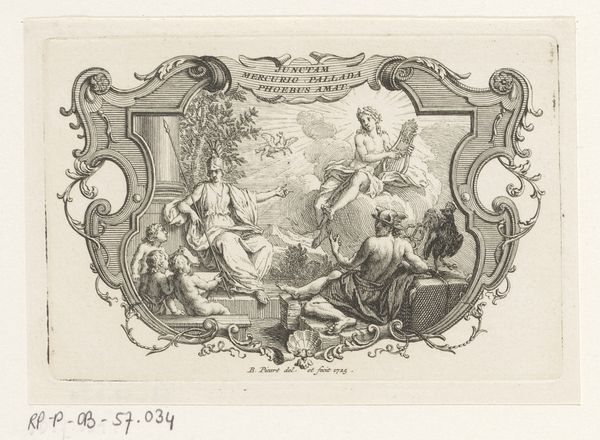
engraving
portrait
baroque
old engraving style
line
history-painting
engraving
Dimensions: height 74 mm, width 119 mm
Copyright: Rijks Museum: Open Domain
Curator: Welcome! Today we are looking at a fascinating portrait titled "Vignet met portret van Michel Le Tellier," crafted sometime between 1655 and 1699. It's currently housed here at the Rijksmuseum. Sèbastien Leclerc I made the engraving. Editor: My first impression is one of intense visual layering. The circular portrait is adorned by what appears to be angels, floral wreaths, and flowing drapery, all meticulously rendered. It almost feels overwhelming! Curator: Indeed! And the “Vignet” format provides great insight to 17th-century politics and power. Michel le Tellier was a very influential French statesman during the reign of Louis XIV, serving as Secretary of State for War. This image served as a form of political propaganda, helping to build and control his public image. Editor: You know, looking closer at the circular frame around his face, I see a deliberate tension between the very structured and formal lines defining Le Tellier and the playful Baroque flourish of the angels. What is the text at the top? Curator: The inscription “Vir Immortalitate Dignus” means "A Man Worthy of Immortality." Leclerc clearly seeks to associate Le Tellier with classical ideals of virtue and eternal fame. The engraving was distributed among political allies and foes alike. Editor: The line work is very skillful and distinct, achieving considerable tonal variation. The composition, anchored by Le Tellier’s portrait, explodes outward into cherubic forms. Tell me about the engraving technique. Curator: Line engraving was meticulous work involving incising an image onto a metal plate. Then the plate was inked, and finally, an impression was made on paper. Line engravings like this one allowed for mass reproduction and broad distribution of portraiture. Editor: And it's clear from the style how well that reproductive quality worked. What might at first glance look like an effortless drawing holds significant labor, design, and deliberate cultural meaning. Curator: Exactly. In essence, this seemingly straightforward portrait functioned as an engine of image-making, consolidating and extending power through its dissemination. Leclerc used formal elements to create, control, and manipulate Le Tellier’s image for both supporters and enemies to receive and respond to in strategic ways. Editor: That helps me see it beyond the mere technical aspects. What initially struck me as decorative is really a web of symbolic gestures and historical meaning. It definitely prompts you to unpack and analyze this piece! Curator: It certainly does. Seeing how seemingly simple designs served complex political aims helps us look at this engraving today.
Comments
No comments
Be the first to comment and join the conversation on the ultimate creative platform.


